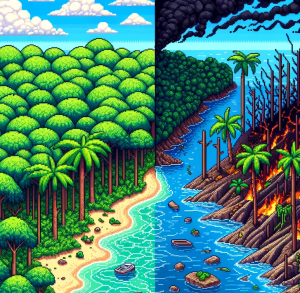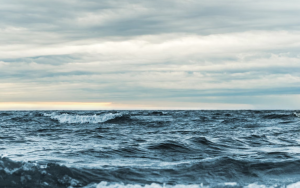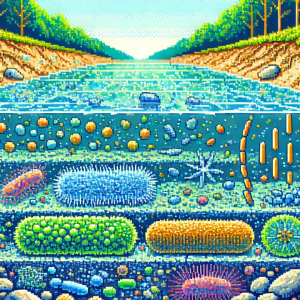
The Island That Split Twice—and Never Stopped Changing
Every mountain, river, and forest in Madagascar tells a story written in stone. Yet scientists have long puzzled over one mystery: Why does this island—separated from Africa and India for over 80 million years—have such strikingly different landscapes on its east and west sides?
A new study in Science Advances uncovers the answer. Madagascar’s dramatic scenery was sculpted not by one, but two ancient rifts—continental tears that tilted the land, rearranged rivers, and may have fueled the island’s astonishing biodiversity.
But here’s where it gets fascinating: these shifts didn’t just shape the land. They may have created the conditions for Madagascar’s famous bursts of life—from lemurs to orchids—to evolve and thrive.
When Continents Break, Landscapes Tilt
Around 170 million years ago, Madagascar was welded to Africa. The first split opened the Mozambique Channel, lifting the western edge of the island into a rugged escarpment. Then, roughly 90 million years ago, another rift tore Madagascar away from India and the Seychelles. This second rupture tilted the island again—this time in the opposite direction.

Imagine sliding a thick book under one side of a table, then another under the opposite end, millions of years later. The surface bends, the “rain” of erosion shifts course, and rivers begin to carve new paths. In Madagascar, this double tilt set off a cascade of changes: old rivers reversed flow, new ones cut deep canyons, and the island’s backbone—the main water divide—migrated eastward toward the coast.
That’s not just cartographic trivia. When water divides move, ecosystems and erosion patterns reset. Valleys deepen on one side while forests bloom on the other, reshaping where plants and animals can live.
The Scientists Who Rebuilt an Ancient Island
To piece together this saga, Romano Clementucci and colleagues at ETH Zurich blended field measurements, erosion dating with cosmogenic isotopes, and computer models of landscape evolution.
They analyzed the shape and steepness of rivers using digital elevation data, measured erosion rates with beryllium-10 isotopes, and simulated how Madagascar’s surface would respond to two phases of rifting.
Their model showed that after the second breakup, the island’s plateau tilted westward, shifting the main drainage divide toward the east coast. Rivers that once flowed gently westward began slicing across the landscape like geological scalpels, carving the linear eastern escarpment that now intercepts monsoon rainssciadv.adw6362.
Meanwhile, the old western escarpment—once towering—slowly eroded into a series of ghostly highlands and detached hilltops, remnants of a vanished landscape.
“But here’s where it gets interesting,” says Clementucci’s team: when they compared erosion rates along the eastern escarpment, they found something unexpected. The fastest-eroding zones were also the most biodiverse.
When Erosion Meets Evolution
Using the isotope-based erosion data, the researchers found that parts of the eastern escarpment erode up to 3,800 meters per million years—among the fastest retreat rates on Earth’s passive marginssciadv.adw6362.
They then compared these erosion “hotspots” with maps of plant species richness and discovered a strong correlation: places where landscapes changed the fastest tended to harbor the greatest number of plant species.
In other words, the same tectonic and erosional forces that shaped Madagascar’s cliffs and valleys also created “speciation pumps”—zones of isolation and reconnection where ecosystems could diversify. Each new landslide or river capture may have acted like a shuffle in nature’s deck, splitting populations apart long enough for new species to arise.
This connection between landscape disequilibrium and biodiversity isn’t unique to Madagascar. Similar patterns appear along India’s Western Ghats, Brazil’s coastal ranges, and South Africa’s Drakensberg Mountains. But Madagascar, with its two sequential rifts, offers perhaps the clearest natural experiment on Earth.
Volcanoes, Faults, and the Island’s Final Touches
The story doesn’t end with ancient rifts. During the past 30 million years, volcanic eruptions and faulting—especially in the Ankaratra volcanic field and the Alaotra-Ankay Graben—further warped the terrain.
These younger forces redirected rivers again, sometimes flipping their flow from west to east. Each shift fragmented habitats, isolating species and intensifying Madagascar’s already exceptional endemism.
The researchers describe the island’s current landscape as being in “geomorphic disequilibrium”—a scientific way of saying it’s still settling into its new shape. That instability may be exactly what keeps Madagascar so biologically rich.
Why It Matters Beyond Madagascar
This study reminds us that landscapes are not static backdrops but active participants in evolution. The tilt of a plateau, the retreat of an escarpment, or the capture of a single river can ripple through ecosystems for millions of years.
For scientists studying biodiversity in other rifted regions—like the East African Rift or Brazil’s coastal mountains—Madagascar’s “two-rift” story offers a blueprint. It suggests that geological instability, when combined with isolation, can become a cradle for life.
For conservationists, it also adds urgency: the same forces that made Madagascar extraordinary now make it fragile. As mining, deforestation, and climate change accelerate erosion, the island’s natural laboratories of evolution could vanish before we fully understand them.
Let’s Explore Together 🌍
- Could shifting rivers and eroding cliffs explain biodiversity hotspots in your region?
- How might we protect landscapes that are still “alive” and evolving?
- If you were on this research team, what modern tool—AI, drones, or citizen science—would you use to map the next great landscape transformation?
Share your thoughts. Science, after all, is one long story of the Earth learning to tell its own past.



